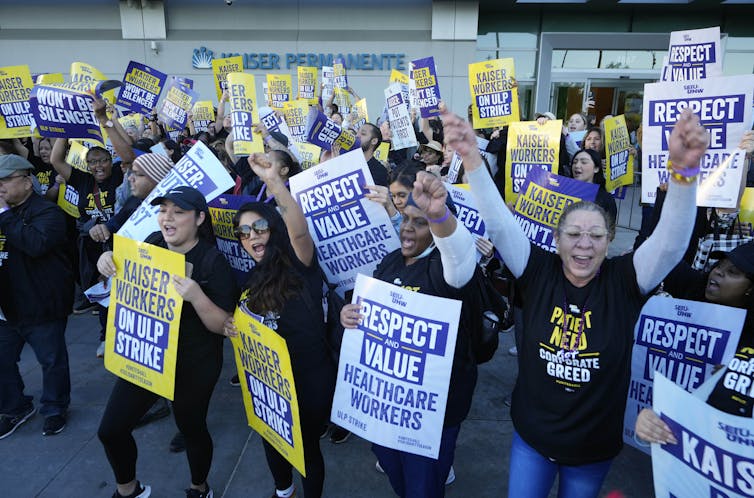Speaking outside of Ford's Dearborn, Michigan headquarters, UAW president Shawn Fain said that "we came here today to get another offer from Ford."
"Unfortunately, this offer was the exact same offer they gave us two weeks ago," said Fain. "They're not taking us serious. We've been very patient working with the company on this. At the end of the day, they have not met expectations, they're not even coming to the table on it. So at this point, we had to take action."
The walkout at Ford's Kentucky Truck Plant in Louisville brings the total number of UAW members on strike at the Big Three U.S. car manufacturers to roughly 33,000. The companies have laid off thousands of non-striking workers since the UAW's walkouts began last month.
Citing an unnamed source inside Ford's Kentucky facility, the Detroit Free Pressreported that "with little warning, thousands of workers left their jobs at 6:30 pm, just minutes after union officials walked through the plant, shut off the line, and told workers to walk out peacefully."
"We're not gonna wait around forever," Fain wrote in a social media post late Wednesday. "If Ford can't get that after four weeks on strike, these 8,700 workers shutting down their biggest plant will help them understand it."
Ford, which has seen its profits surge this year, expressed outrage over the strike expansion, noting in a statement that the Kentucky Truck Plant is one of the biggest auto factories in the world.
"The vehicles produced at the Louisville-based factory—the F-Series Super Duty, the Ford Expedition, and the Lincoln Navigator—generate $25 billion a year in revenue," the company said.
Chris Brooks, a UAW organizer, responded that "Ford just admitted they're losing $48,000 a minute in revenue while the Kentucky Truck Plant is on strike."
"That is how much value autoworkers at this one plant produce—and now they're showing Ford how expensive it is to not come to the table and pony up," Brooks wrote on social media.
Ford has offered UAW members a 23% wage increase over the course of a four-year contract as well as cost-of-living adjustments. The UAW has demanded a 36% wage hike and significant improvements to retirement, healthcare, and other benefits.
Reutersreported Wednesday that Ford and UAW negotiators "had been working to resolve differences on retirement security and union representation at the company's future battery plants earlier in the day."
Last week, the UAW announced that General Motors has agreed to include electric battery plant workers in its labor agreement, which Fain described as a "transformative win."
On Wednesday, according to Reuters, Fain and other UAW officials "called a meeting with Ford... and demanded a new offer, which Ford did not have."
"You just lost Kentucky Truck," Fain reportedly said in response. "This is all you have for us? Our members' lives and my handshake are worth more than this."
In his remarks outside Ford's headquarters on Wednesday, Fain said the company has only itself to blame for the strike escalation.
"They made it happen. This is on them, they have to own it," said Fain. "If the companies aren't going to come to the table and take care of the membership's needs, then we will react."
Originally published on October 12th, 2023, in Common Dreams
Please support and visit The Brooks Blackboard's website for more news stories, and my brief bio.
On social media, visit me on
Facebook: The Brooks Blackboard
Twitter: @_CharlesBrooks


.png)
.png)
.png)
.png)

.png)
.png)